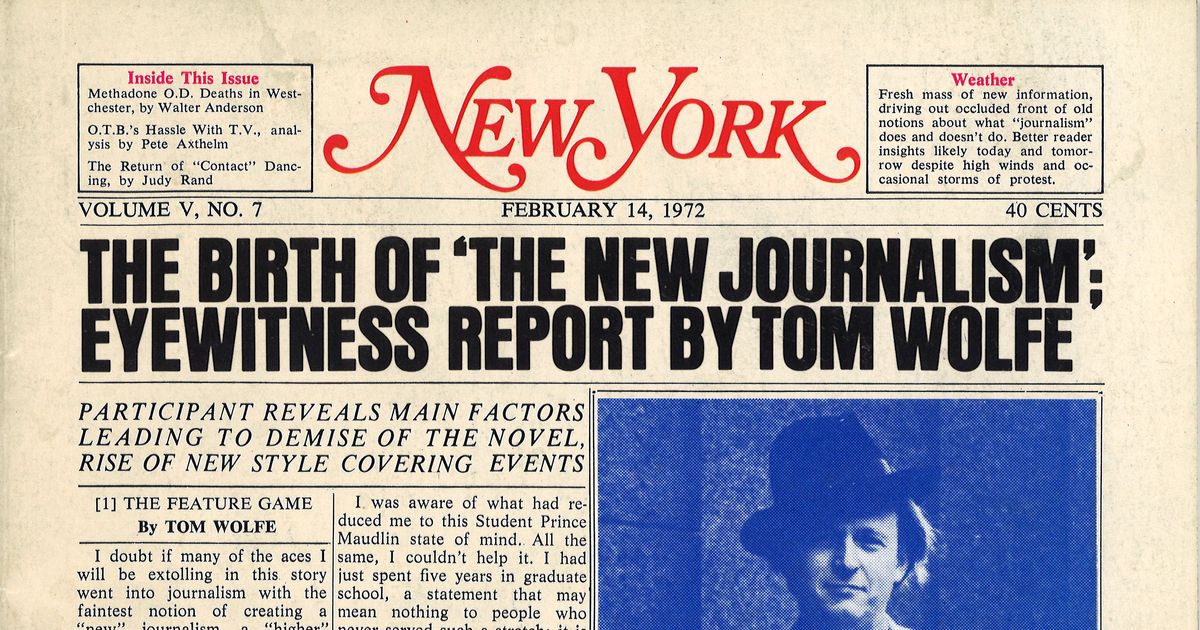The Buzz on News Articles
Table of ContentsRumored Buzz on News ArticlesThe 7-Second Trick For News ArticlesGet This Report on News ArticlesRumored Buzz on News ArticlesAll about News Articles
Great understanding of different subjects provides students an one-upmanship over their peers. Also though electronic and social media are easily accessible, we need to not neglect just how essential it is to review the papers. Moms and dads should attempt and inculcate the routine of reading a paper as an everyday regimen to continue the heritage of the revered print medium.Information tales also contain at least one of the complying with vital attributes loved one to the intended audience: proximity, prestige, timeliness, human passion, strangeness, or effect.
Within these limits, news tales likewise intend to be comprehensive. Among the bigger and more revered newspapers, fairness and equilibrium is a significant variable in providing information.
Newspapers with a worldwide audience, for example, tend to make use of an extra official design of writing. The details options made by an information electrical outlet's editor or content board are usually gathered in a style guide; usual style overviews include the and the United States News Design Book. The major goals of news writing can be summarized by the ABCs of journalism: precision, brevity, and clearness.
What Does News Articles Do?
Generally, journalists will not utilize a lengthy word when a brief one will certainly do. They make use of subject-verb-object building and construction and vibrant, active prose (see Grammar). They provide narratives, instances and allegories, and they hardly ever rely on generalizations or abstract ideas. Information authors try to avoid using the very same word greater than once in a paragraph (occasionally called an "resemble" or "word mirror").
Headings in some cases omit the topic (e.g., "Leaps From Watercraft, Catches in Wheel") or verb (e.g., "Feline woman fortunate"). A subhead (additionally subhed, sub-headline, subheading, subtitle, deck or dek) can be either a subservient title under the primary headline, or the heading of a subsection of the write-up. It is a heading that comes before the primary text, or a team of paragraphs of the main text.

of a post topic, informant, or interviewee), it is referred to as a pulled quotation or pull quote. Added signboards of any one of these kinds might appear later on in the write-up (specifically on succeeding pages) to entice further analysis. Journalistic sites occasionally make use of computer click this site animation methods to exchange one signboard for one more (e.g.
Not known Incorrect Statements About News Articles
Such billboards are additionally used as tips to the post in various other sections of the magazine or site, or as advertisements for the piece in various other publication or websites. News release of the Swiss government. Typical framework with title, lead paragraph (summary in strong), various other paragraphs (details) and contact info.

Example of a hard-lead paragraph NASA is suggesting another room project. The budget requests around $10 billion for the task.
An "off-lead" is the second most crucial front page information of the day. To "hide the lead" is to begin the post with background info or details of secondary relevance to the readers, forcing them to check out even more deeply into an article than they should have to in order to discover the essential points.
Some Known Details About News Articles
Typical use is that or 2 sentences each develop their own paragraph. Reporters usually explain the organization or structure of a newspaper article as an upside down pyramid. The essential and most intriguing aspects of a tale are put at the beginning, with supporting details adhering to in order of diminishing importance.
It allows people to check out a subject to only the depth that their interest takes them, and without the imposition of details or nuances that they can think about irrelevant, but still making that info offered to extra interested viewers. The inverted pyramid framework additionally makes it possible for posts to be trimmed to any approximate length throughout layout, to suit the space offered.
Some authors start their stories with the "1-2-3 lead", yet there are many kinds of lead readily available. A kicker can refer to multiple things: The last official site tale in the news broadcast; a "delighted" story to end the program.
Longer articles, such as magazine cover articles and the items that lead the inside sections of a newspaper, are called. Attribute stories vary from straight information in a number of methods. Foremost is the absence of a straight-news you can find out more lead, the majority of the time. Rather of supplying the significance of a story in advance, attribute writers may try to tempt readers in.
The 5-Minute Rule for News Articles
The journalist usually information interactions with meeting topics, making the piece a lot more personal. A feature's very first paragraphs often relate an appealing moment or event, as in an "anecdotal lead". From the particulars of an individual or episode, its view quickly broadens to generalities concerning the tale's subject. The area that signifies what a feature has to do with is called the or billboard.

The Editor's Tool kit: A Recommendation Overview for Beginners and Professionals (2001) Allan M. Siegal and William G. Connolly. The New York Times Guidebook of Design and Use: The Authorities Design Guide Utilized by the Writers and Editors of the Globe's The majority of Reliable Paper (2002) M. L. Stein, Susan Paterno, and R.
Comments on “The 7-Minute Rule for News Articles”